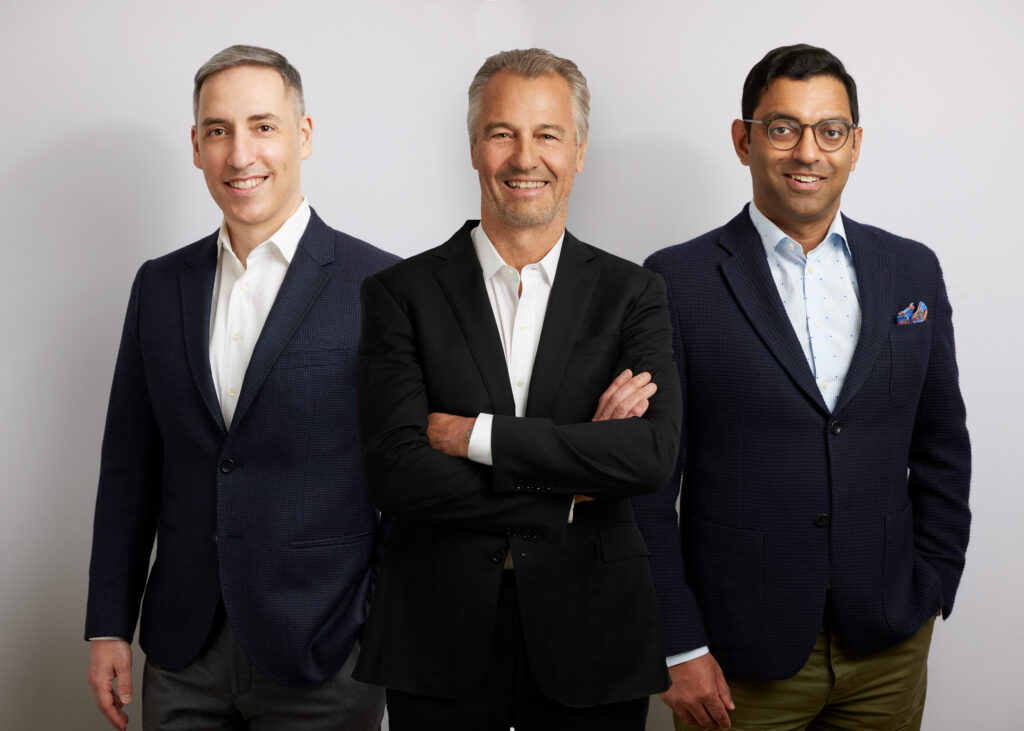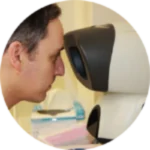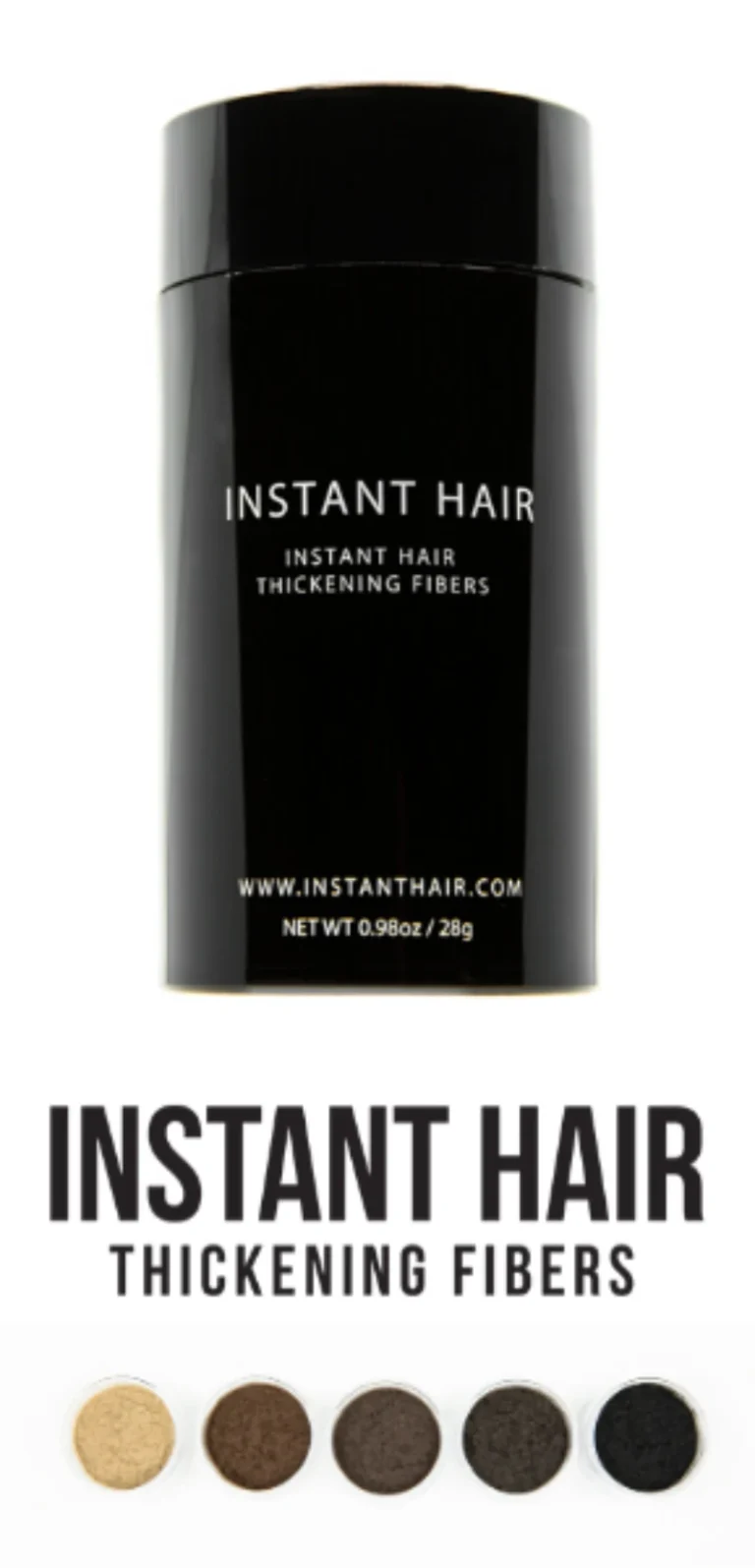Essential Guide to FUE
We’ve gathered the most notable information about Follicular Unit Excision into one place for you. FUE is an innovative and natural-looking hair transplant option which has become the more popular and sought after choice since its introduction to the world of hair transplantation.

- Home
- Hair Loss Solutions
- Surgical Hair Loss Solutions
- Essential Guide To FUE

Toronto Hair Transplant Surgeons are internationally known for our pioneering work in hair transplantation.
Hair loss can be a significant factor affecting men’s and women’s quality of life and self-esteem. In many cases, a hair transplant surgery can provide the boost they need to feel more confident, feel pride in their appearance and seek new opportunities in their career or love life. If you are just starting your research into hair restoration surgery, you may have several questions about what it entails and what you should expect. Here’s our complete guide to understanding hair loss and hair surgery.
- What Causes Hair Loss?
- What Is FUE?
- How to Choose a Surgeon
- Tips For a Successful Hair Restoration Consultation
- The Top 5 Benefits Of FUE Hair Restoration Surgery
- What is the best age to get hair restoration surgery?
- Who is a good candidate for hair restoration surgery?
- Is a hair transplant painful?
- How much does FUE cost?
- When will I see results from my hair transplant?
- Is getting FUE painful?
- How long will I need to wait until I see the final results?
- Is the transplanted hair permanent?
- Will I have a scar?
- Will people be able to tell I’ve had a hair transplant?
- Will I have to take time off work?
- Are there any risks?
What Causes Hair Loss?
You may have learned in school that hair loss is hereditary, and that you only inherit it from one side of your family. However, this view is overly simplistic. In most cases, male pattern baldness comes from both your parents’ genes, and is the result of excessive production of a hormone called dihydrotestosterone, or DHT for short. There are other factors that contribute to hair loss as well, including stress and inflammation.
In women, the most common underlying reason for female pattern hair loss is called androgenetic alopecia. Women also lose hair slightly differently than men. While men’s hair loss typically involves a receding hairline and hair loss on the crown of their heads, women tend to experience thinning hair all over their scalp.
What Is FUE?
Notable for being the most innovative and natural-looking hair transplant option, follicular unit excision (FUE) is a technique in which a doctor removes tiny groupings of hair from a donor area and reinserts them into the balding areas on the top and sides of the head. In contrast to older methods of hair restoration surgery, the procedure does not require stitches or leave patients with visible scarring.
FUE is different from another hair transplantation method called follicular unit transplantation, or FUT, which involves cutting a long strip of hair from the back of the patient’s scalp. FUT, which is also called strip surgery, is one of the best ways to quickly get many healthy grafts in a short amount of time when performed by a skilled surgeon. However, it is also more invasive and does leave a linear scar on the back of the head. The size and visibility of the scar are greatly reduced with the skills of an experienced surgeon. If you plan to cut your hair short after your hair restoration surgery, FUE may be a better option for you than FUT.
Our Results

Toronto Hair Transplant Surgeons are internationally known for our pioneering hair transplantation work.
Our huge archive is here to help you see what we can do for you. Use the link below to view some sample cases.
How to Choose a Surgeon
If you are considering getting a hair transplant surgery, the most essential decision you will need to make is who will perform your procedure. The surgeon’s experience, number of years in practice, qualifications and patient before-and-after photos are all factors that come into play.
You’ll also need to speak with each doctor you are considering to understand their approach and determine whether their personality puts you at ease. Your surgeon can evaluate whether you are a good candidate for the procedure you are considering, based on the quality of your existing hair and your degree of hair loss.

THTS Gallery

Familiarize yourself with our layout before you come in.
Visit the gallery to take a peek at our Oakville based clinic layout and surgical rooms.
TIPS FOR A SUCCESSFUL HAIR RESTORATION CONSULTATION
Here are some questions to ask potential surgeons during your private consultation:
- Have you dedicated your practice solely to surgical hair restoration? If not, what percentage of your practice is?
- Can you provide me with references from previous clients I can talk with about their surgery and recovery process?
- What is your track record with providing results for people with the same hair type as I have?
- Will you personally perform my procedure?
- Are you affiliated with any professional organizations, such as the International Society of Hair Restoration Surgery?
- Can I tour your surgical facility?
- What kind of follow-up care can I expect you to provide?
- What results can hair restoration realistically help me achieve?
Unfortunately, scams, half-truths and even outright misleading claims are rampant in the hair transplant industry. Knowing that people who seek hair restoration often feel desperate for results, some unethical people claim to be experts in hair transplantation, even though they are not medically qualified. During your initial consultation, be sure to meet with the hair transplant doctor who will be performing your surgery. If the hair transplant doctor is not available, and you end up meeting with a “medical consultant” we suggest that you leave immediately and do not pursue your procedure at that clinic.
THE TOP 5 BENEFITS OF HAIR RESTORATION SURGERY
Hair restoration can be a life-changing procedure for men and women who have felt embarrassed about their hair loss. Here are some of the advantages this surgery can bring.
1. Improved Looks and Self-Esteem
Most men and women seek hair restoration surgery because their thinning hair left them self-conscious about their appearance. This type of procedure will provide you with the opportunity to feel proud of the way you look, maybe for the first time in several years.
2. Natural-Looking Results
Despite the rapid advancements in hair restoration technology, many people who are good candidates for a hair transplant avoid the procedure because they believe their results will look fake. In fact, surgeons have now perfected the craft to the point that when the results are final, nobody will be able to detect that you had anything done. Men can even get a beard transplant to make their facial hair thicker, fuller and more luxurious.
3. Minimally Invasive
Don’t let the word “surgery” scare you away. While hair transplantation is considered a surgical procedure, with FUE, there are no sutures, bandages or incisions to manage. It is a same-day procedure, and you can go back to work the next day if you so choose – though many patients take a day or two off to rest and recover.
4. Permanent Results
The hair growing on the back and sides of your head is genetically programmed to be permanent. The hair retains this quality after getting transplanted to the top of the head, too. However, it’s important to note a hair transplant will not prevent you from losing other hair on your head that would have fallen out anyway. For best results, you can maintain the look of your newly transplanted hair by using proven treatments such as minoxidil and finasteride (brand names Rogaine and Propecia, respectively) and newer treatments such as PRP and low-level laser therapy.
5. No More Wigs, Hats or Scarves
Once your hair grows in, you will be able to cut, wash, colour and style it in any manner you wish. You won’t have to mask your hair loss with hats or wigs anymore and can instead step out with full confidence in your healthy, growing head of hair.
HAIR TRANSPLANT FAQS
Do you still have questions? Here are answers to some of our most frequently asked patient questions about hair transplant surgery.
WHAT IS THE BEST AGE TO GET HAIR RESTORATION SURGERY?
You may have heard it’s better for younger people to get a hair transplant to prevent the degree of their balding or thinning from becoming too advanced. However, in most hair transplantation procedures, there is a better chance of success when patients are a little older. That’s because younger patients have a less predictable hair loss pattern. Your hair loss can advance as you age, cancelling out the results of your original surgery.
WHO IS A GOOD CANDIDATE FOR HAIR RESTORATION SURGERY?
Your surgeon will assess the quality and amount of your donor hair to determine whether you are qualified to get hair restoration. People with advanced balding across their entire scalp may not have a sufficient quantity of donor hair for successful results. In addition, if the underlying cause of your hair loss is not genetic, a hair transplant may not be ideal for you.
IS A HAIR TRANSPLANT PAINFUL?
The procedures themself include numbing the scalp before the surgery begins, so most patients do not report any pain during their hair transplant. However, you may experience some general discomfort for the first few days after your transplant; it should be mild enough that you can control it by taking over-the-counter pain medication.
Are there any other risks or side effects?
Bleeding, swelling and scabbing are all normal after hair restoration surgery. You can minimize these side effects by following your doctor’s post-operative instructions.
How much does a hair transplant surgery cost?
The two main costs of a hair transplant are the surgeon’s time and associated clinic or hospital fees. When you meet with potential surgeons, make sure to ask about all the fees involved. You should also ask how they price their hair implants. Many hair surgeons price per graft, so if your surgeon estimates you’ll need many grafts to achieve your desired results, you can expect to pay more at a clinic that charges based on this model. The method of transplantation will also make a difference to cost – FUT procedures are usually less expensive than FUE for example.
When will I see results from my hair transplant?
One of the first things you should know about any hair transplant timeline is that you won’t wake up the next day with a full head of hair. Though it can be frustrating to realize hair restoration can’t provide immediate results, remember the adage “The best things come to those who wait.” The full results of your new hair growth will likely take about a year from the day you get your surgery.
Long-Lasting Hair Restoration With the Toronto Hair Transplant Surgeons
If you’re ready to begin the next phase of your hair restoration journey, contact us at the Toronto Hair Transplant Surgeons today. As recognized pioneers and experts solely focused on hair restoration, our doctors are eminently qualified to provide you with outstanding results, just like they have been able to do for hundreds of men and women from all over the world.
IS GETTING FUE PAINFUL?
The procedure itself is not painful since the scalp is anaesthetized beforehand. The only part of the procedure that could cause some discomfort is the administering of the anaesthetic itself, although this is well tolerated by most patients.
We’re proud to offer the Pro-Nox anxiety and pain control system, one of the most advanced comfort measures available for hair transplant surgery. Pro-Nox is a system that delivers an inhaled mixture of nitrous oxide and oxygen. This mixture is highly effective at calming your nerves and lessening the discomfort of brief periods of your surgery or procedure.
HOW LONG WILL I NEED TO WAIT UNTIL I SEE THE FINAL RESULTS?
Once the new follicles have been transplanted, the new hair will fall out between 1 week and 2 months after the surgery. This is completely normal and to be expected. The new hair will then continue to grow, and you can see the final results after approximately a year.
IS THE TRANSPLANT HAIR PERMANENT?
Yes – the hair at the back and sides of the head is genetically programmed to be permanent. The hair retains this quality when it’s transplanted to the top of the head, too. It should be noted that this will not prevent the other hair on your head that you were going to lose anyway from falling out. This is why it’s always recommended that you go on treatments such as Finasteride or Minoxidil to prevent further hair loss.
WILL I HAVE SCAR?
FUE does leave lots of tiny scars that are invisible to the human eye, but for all practical purposes – no, FUE will not leave you with visible scarring.
FUT on the other hand will leave you with a linear scar from the donor area. However, with skilled surgeons like Dr. Huber, Dr. Alexander, and Dr. Jones – even this can be minimized to be less visible and ideally, covered with hair regrowth.
WILL PEOPLE BE ABLE TO TELL I’VE HAD A HAIR TRANSPLANT?
This will depend. If you have mild to moderate thinning at the crown, people might not be able to tell that you’ve had a transplant. If however, you’re having a new hairline constructed as part of your surgery, yes, it’s going to be apparent.
WILL I HAVE TO TAKE TIME OFF WORK?
Some patients like to take a few days off work immediately after their surgery, but as long as your job doesn’t involve a lot of strenuous activity, it’s usually not necessary to plan for too much downtime. A lot of patients like to get their procedure done towards the middle of the week, taking a couple of days off work with the additional few days to recover over the weekend.
ARE THERE ANY RISKS?
Because it’s a non-invasive procedure, the risks with a hair transplant procedure are very low. There’s some mild swelling in the days following surgery, but generally, the side effects are very mild and easily tolerated.




